Search
Ecozones
The southeast Avalon is composed of two distinct ecozones: the Avalon Forest Ecozone, a boreal forest found in upland areas and in the larger river valleys, part of the Avalon forest; and the largely treeless Eastern Hyperoceanic Barrens Ecozone.
The Avalon Forest Ecozone
The Avalon Forest Ecozone is a boreal forest extending south and east from the range of hills in the north and northeast through rolling upland areas and river valleys to the coast. The forest is most easily accessible from Route 10 in the Renews and Cappahayden areas, at Chance Cove Provincial Park, and from Route 10 in the forested river valleys at Biscay Bay, Trepassey and Peters River.
One thing many visitors notice, is that the trees are not too tall. The climate and soil conditions in the southeast Avalon limit both variety and growth of tree species. The forested areas are dominated by coniferous trees typical of the boreal forest such as White and Black Spruce, Larch (Tamarack) and Balsam Fir that rarely exceed 12 metres (40 ft) in height.
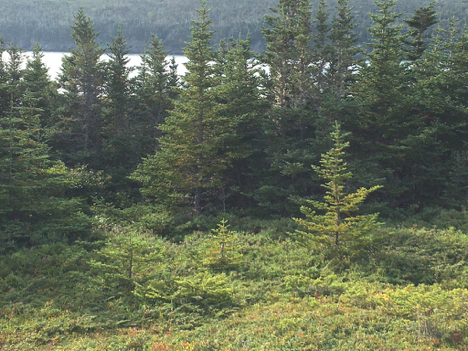 Boreal forest on the east side of Biscay Bay barachois
Boreal forest on the east side of Biscay Bay barachois
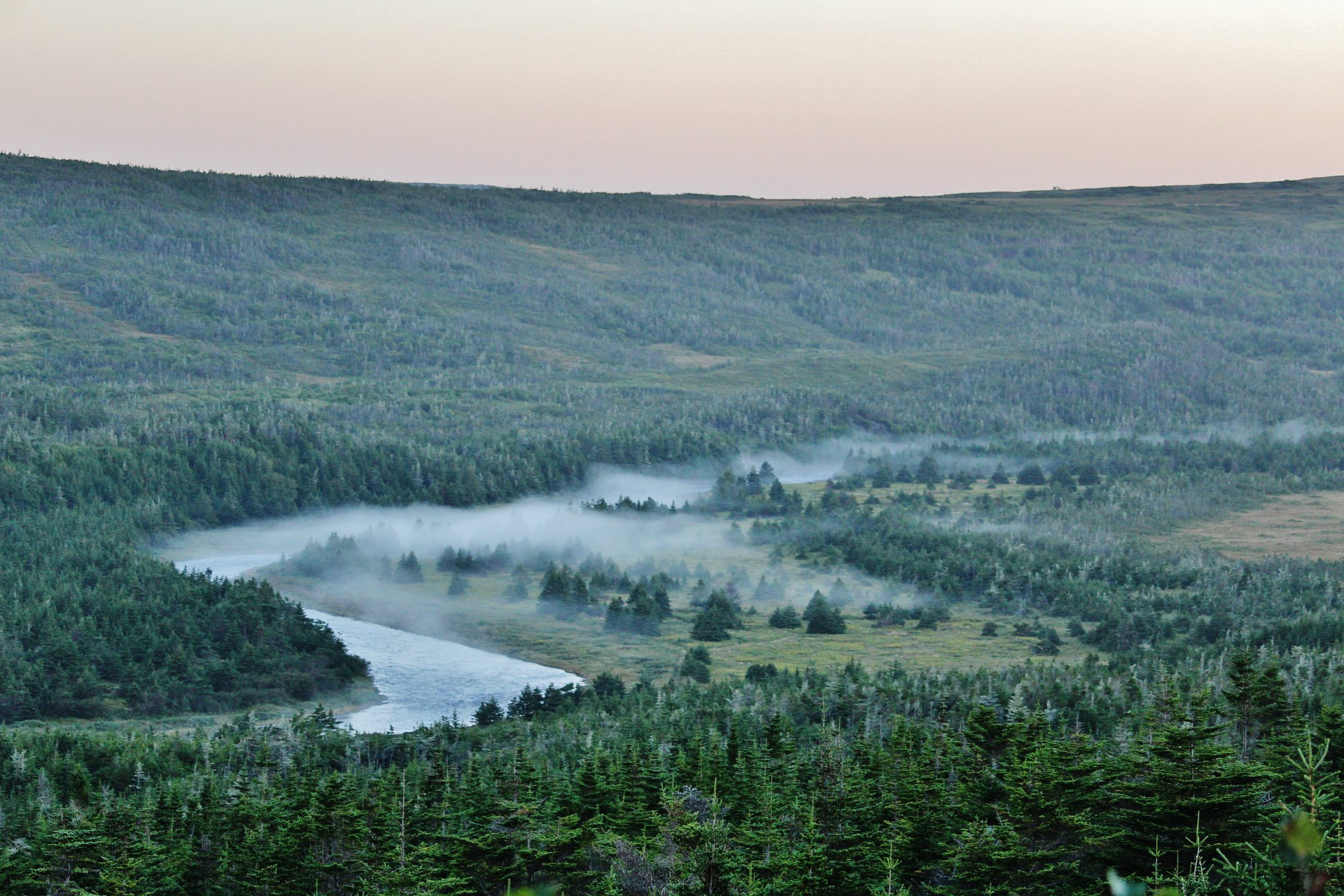 A smaller area of boreal forest with open bog areas can be found in the lower Peter’s River valley.
A smaller area of boreal forest with open bog areas can be found in the lower Peter’s River valley.
In the 1960s Sitka Spruce test plots were planted by the Newfoundland Forestry Service on at least four sites on the high lands behind Shoal Point at the north end of Trepassey harbour. These four taller exotic groves can be seen dominating the skyline as one drives along Route 10 east of the town water tower.
Deciduous trees such as Yellow and white birch, and Mountain Ash grow in more sheltered locations in the boreal forest and sometimes extensively in areas regenerating after firewood cutting such as along Bear Cove Point Road, Renews and along the Northwest Brook Trail in Trepassey.
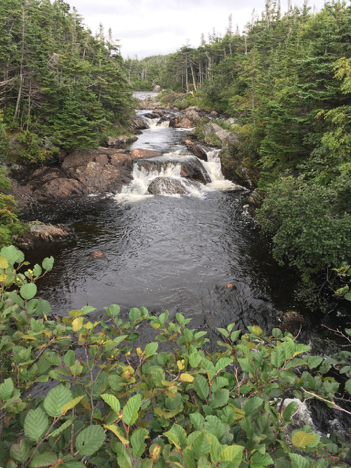 Boreal forest lining the edge of Back River, Biscay Bay with alders in foreground
Boreal forest lining the edge of Back River, Biscay Bay with alders in foreground
Along road edges through forested areas and along watercourses Speckled Alders are dominant. These alders are a magnet for migrant passerines, particularly vireos and warblers. One of the most noticeable native shrubs is Wild Raisin, a species of Viburnum, whose dark raisin-shaped fruits hang on the trees until late in the winter.
Along the roads and lanes grow wild roses, some native, others European, but all sweet-scented.
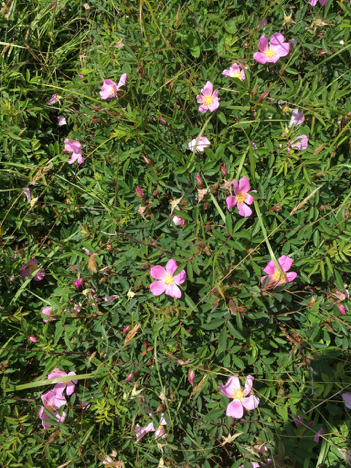 Trepassey was once called “River of Roses” by the Basques.
Trepassey was once called “River of Roses” by the Basques.
The Eastern Hyperoceanic Barrens Ecozone
The Eastern Hyperoceanic Barrens Ecozone (for more detailed analysis, see http://www.flr.gov.nl.ca/naturalareas/pdf/island7easternhyperoceanicbarrens.pdf) is an area of rolling heaths and bogs dotted with small shallow rocky lakes and bog ponds and singularly devoid of tall trees. It is often seen as harsh and empty, but if you are partial to moors and open country, it is an extraordinary landscape. Veteran travellers have likened the landscape to northern Scotland.
Leaving the Avalon forest just south of Cappahayden and travelling all the way to Portugal Cove South (PCS) the country along Route 10 opens up and you can see into the far distance (as long as there is no fog!). From PCS the barrens can be accessed to the east along a 21-km partially paved road, which ends at Cape Race. To the west of PCS, barrens dominate along Route 10 all the way to St. Vincent’s. They are broken only by major forested areas in the sheltered valleys of the Biscay Bay River, Trepassey Harbour and the feeder rivers known as Northwest and Northeast Brook. These river valleys extend northwards to the Wilderness Area.
A photograph of the west Trepassey barrens with caribou. It was taken by Clifford Doran, resident of Trepassey and lightkeeper at Powles Head, Trepassey. We are much indebted to Clifford who has graciously given us permission to use his photos.
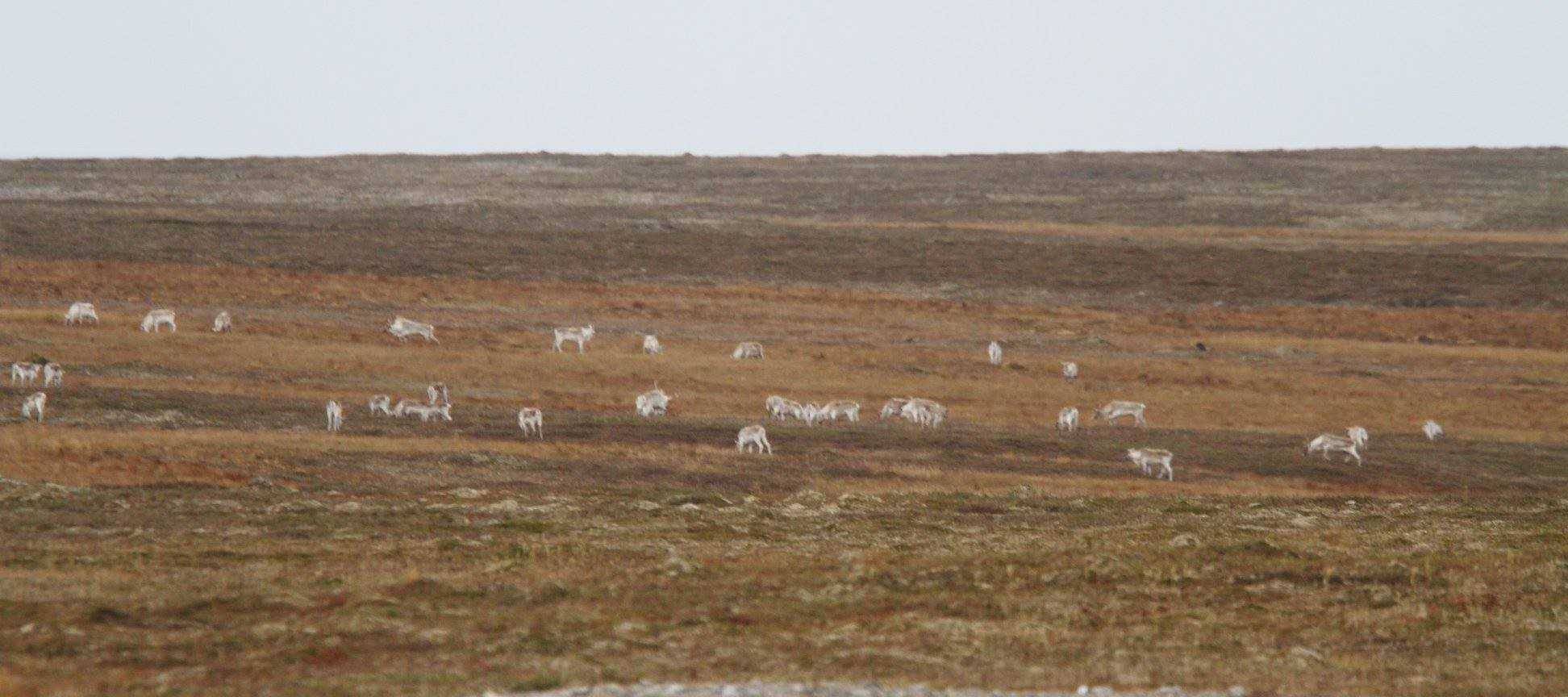 A photograph of the west Trepassey barrens with caribou.
A photograph of the west Trepassey barrens with caribou.
On the low-lying areas in the barrens are pockets of stunted White Spruce and occasionally Balsam Fir widely known in Newfoundland as tuckamore (botanists call this Krummholz). Some of these tiny trees may be a hundred or more years old. Beneath them grow moss and small plants, creating a miniature forest. Tuckamore is one of the hazards of walking over the barrens. The ground may look solid, but the smooth surface is deceptive. Moss, lichens, ferns and other low vegetation cover deep holes in the underlying rock, and wading through close-packed tuckamore is an impossibility. Stick to the sheep trails.
Daisies, yellow and orange hawkweeds, yarrows, and clovers line the verges of the highways, but the barrens harbour a variety of unusual and unique plants that strike the eye of a visitor.
The barrens are by far the dominant landscape feature in the southeast Avalon. In upland areas near the coast harsh climatic conditions do not permit trees to grow. In low-lying sheltered areas drainage systems support dense ground-hugging white spruce known locally as tuckamore (warning: don’t try walking through the leg-grabbing tuckamore; much easier to stick to the trails!). Areas of poor drainage in low-lying areas are dominated by small ponds surrounding peat bogs. In upland areas small bogs without ponds (blanket bogs) are dominant. In wider flatter areas where the substrate is at or near the surface, there are larger ponds or small lakes. Given the overall poor drainage on the barrens, perhaps it is not surprising that bog ponds and small lakes are estimated to cover about 25% of the eco-region.
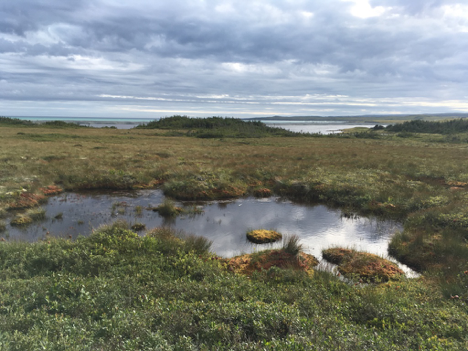 Bog pond on the barrens with tuckamore from the Trepassey-Biscay Bay Railway Trail
Bog pond on the barrens with tuckamore from the Trepassey-Biscay Bay Railway Trail
The most important work on the geology, biography and ecology of the Avalon can be found in: G. R. South’s Biogeography and Ecology of the Island of Newfoundland (1983). This book is out of print and generally hard to access. Portions can be read here.
Soils
In the southeast Avalon there are two basic soil types:
Podzols
Podzols in upland areas and peat associated with bogs. Podzols are infertile arctic soils found in forested areas where coniferous trees abound and on upland areas of the barrens.
Peat
Peat is the product of decaying vegetative matter that over millennia forms the surface layer of bogs.
Generally both soil types are acidic and support vegetation more suitable for grazing animals than growing crops.
Agriculture Canada has carried out soil surveys of the Avalon. Detailed information on podzols from a site in the Avalon Forest (Peter’s River) and from two sites on the barrens (near Trepassey and Biscay Bay) can be found at: http://sis.agr.gc.ca/cansis/publications/surveys/nf/nf3/nf3_report.pdf
